Arizona Plant with Orange Flowers – Arizona is home to a variety of stunning plants with orange flowers that can brighten up any landscape. In this comprehensive guide, we will delve into the vibrant world of Arizona plants with orange flowers. From their unique characteristics to their ability to attract pollinators, these plants are a perfect addition to any garden in Arizona.
Key Takeaways:
- Arizona is rich in orange flowering plants that can add a pop of color to your garden.
- Among the common orange wildflowers in Arizona are the Butterfly Weed, Blanket Flower, Texas Lantana, Tropical Milkweed, Orange Agoseris, and Wholeleaf Paintbrush.
- These orange flowers attract various wildlife, from butterflies and hummingbirds to bees and birds.
- While some orange wildflowers are native to Arizona, others like the Tropical Milkweed can be harmful to certain butterfly species.
- The Orange Agoseris can be used to make Dandelion beer or wine.
- The Wholeleaf Paintbrush stands out with its vibrant red-orange bracts and unique white hairs on its stems and leaves.
Common Arizona Plants with Orange Flowers
Let’s take a closer look at some of the most common Arizona plants with vibrant orange flowers. These stunning wildflowers not only add a pop of color to the desert landscape but also attract a variety of wildlife, making them a beautiful and beneficial addition to any garden.
1. Butterfly Weed
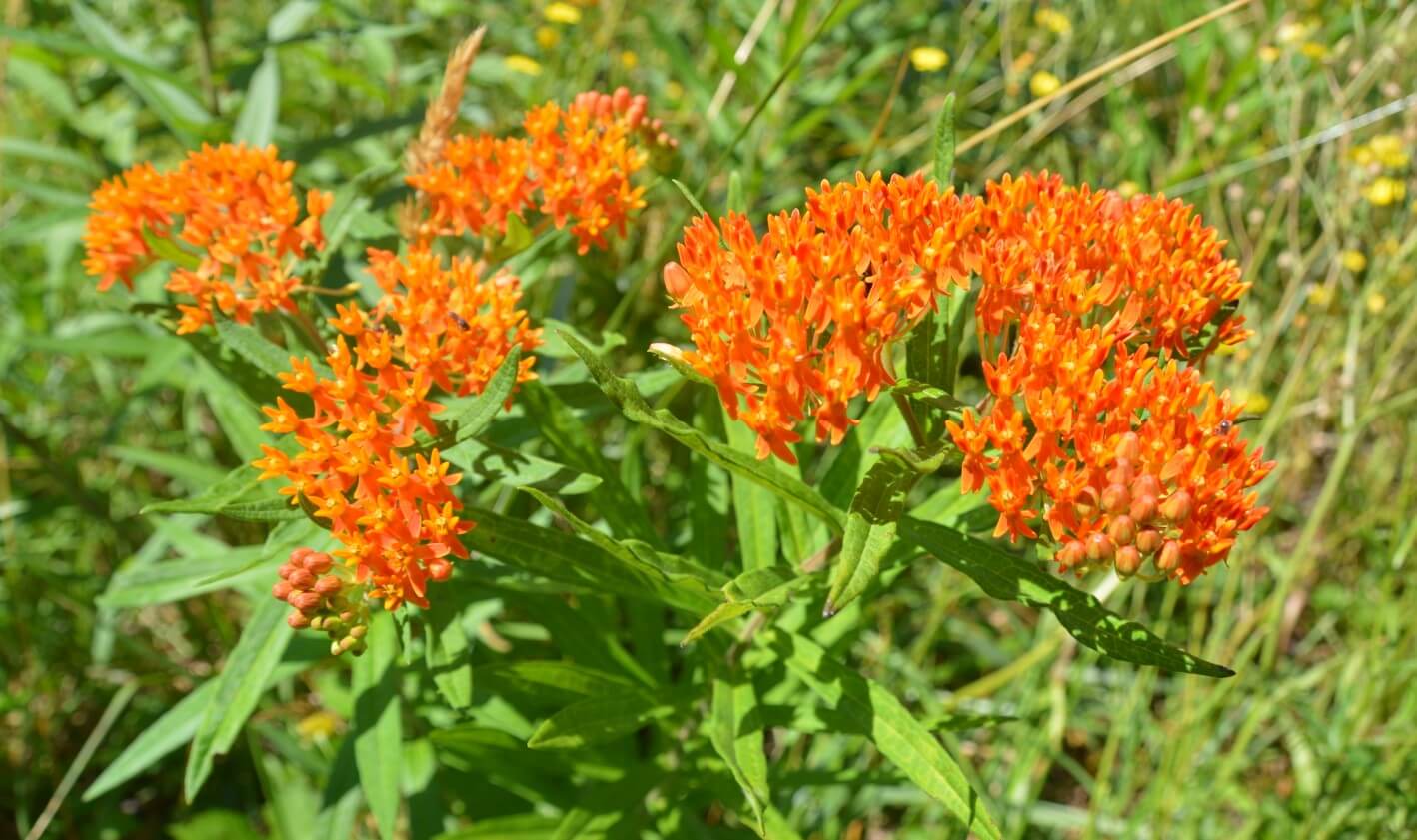 Also known as Asclepias tuberosa, the Butterfly Weed is a native Arizona plant with clusters of bright orange flowers. As the name suggests, it is a magnet for butterflies and hummingbirds, making it a delightful choice for pollinator gardens. This perennial plant thrives in well-drained soil and full sun, making it a perfect choice for the arid Arizona climate.
Also known as Asclepias tuberosa, the Butterfly Weed is a native Arizona plant with clusters of bright orange flowers. As the name suggests, it is a magnet for butterflies and hummingbirds, making it a delightful choice for pollinator gardens. This perennial plant thrives in well-drained soil and full sun, making it a perfect choice for the arid Arizona climate.
2. Blanket Flower
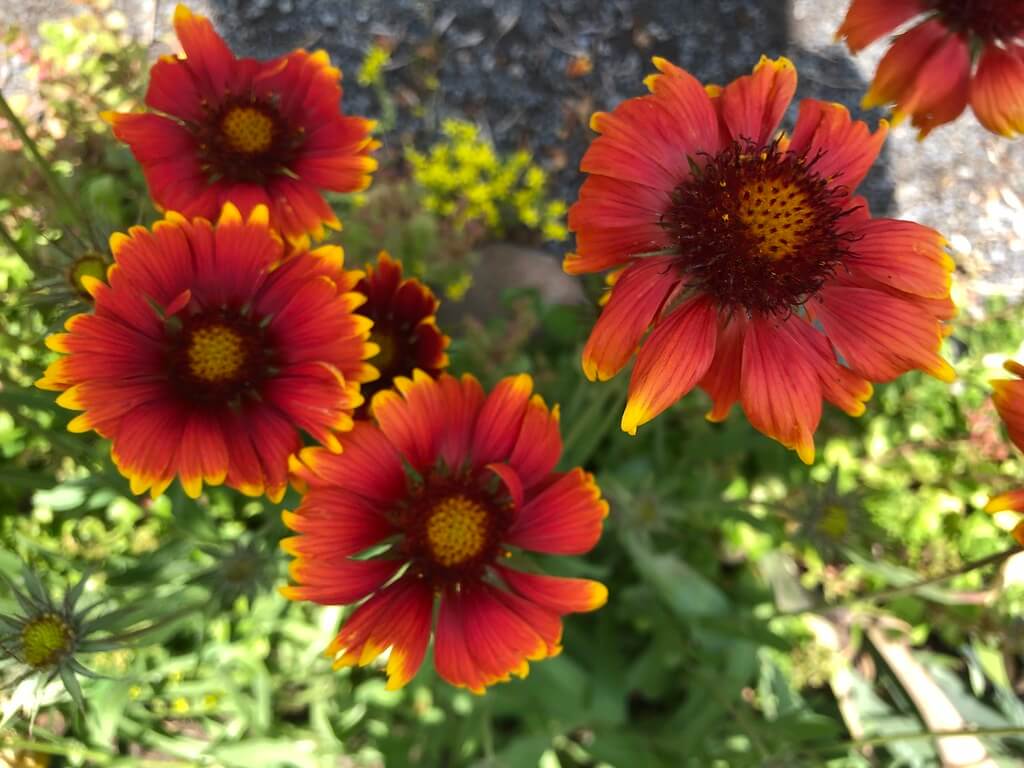 The Blanket Flower, scientifically known as Gaillardia aristata, is another popular Arizona wildflower with orange blooms. Its petals display a striking combination of red, orange, and yellow colors, resembling a warm and cozy blanket. Bees and birds are attracted to its nectar-rich flowers, making it a wonderful addition to any wildlife-friendly garden.
The Blanket Flower, scientifically known as Gaillardia aristata, is another popular Arizona wildflower with orange blooms. Its petals display a striking combination of red, orange, and yellow colors, resembling a warm and cozy blanket. Bees and birds are attracted to its nectar-rich flowers, making it a wonderful addition to any wildlife-friendly garden.
3. Texas Lantana
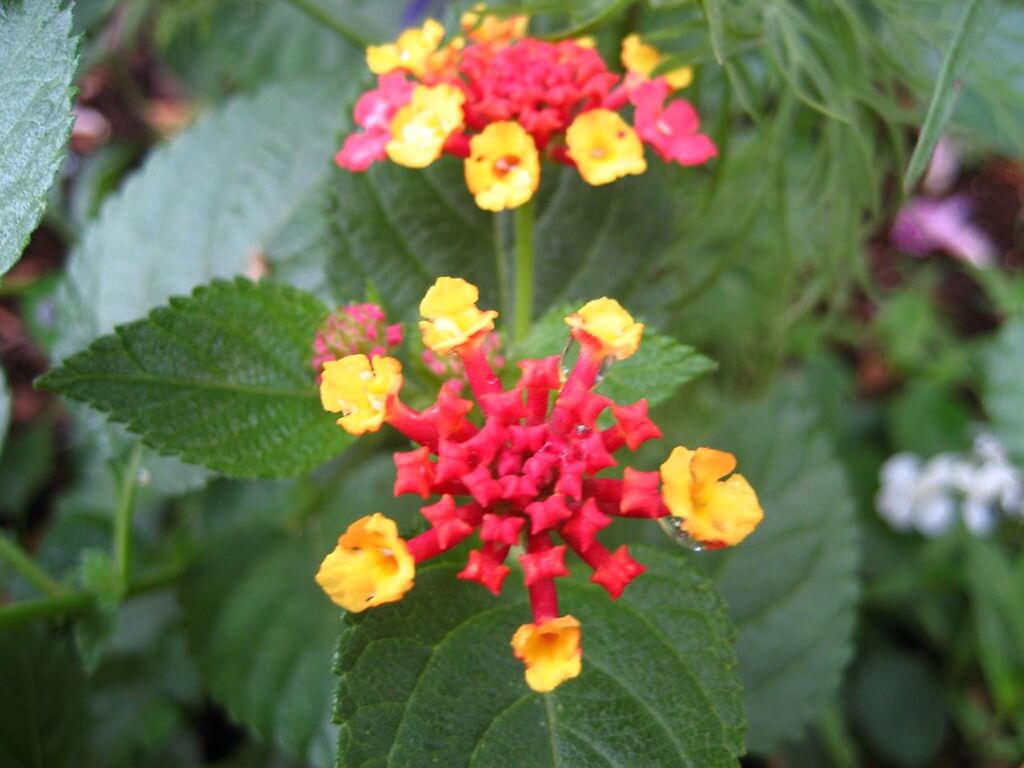 The Texas Lantana, or Lantana horrida, is a low-maintenance shrub that produces clusters of vibrant orange flowers. Not only does it add a splash of color, but it also attracts a variety of insects and hummingbirds. This drought-tolerant plant thrives in hot and dry conditions, making it well-suited for Arizona’s desert gardens.
The Texas Lantana, or Lantana horrida, is a low-maintenance shrub that produces clusters of vibrant orange flowers. Not only does it add a splash of color, but it also attracts a variety of insects and hummingbirds. This drought-tolerant plant thrives in hot and dry conditions, making it well-suited for Arizona’s desert gardens.
4. Tropical Milkweed
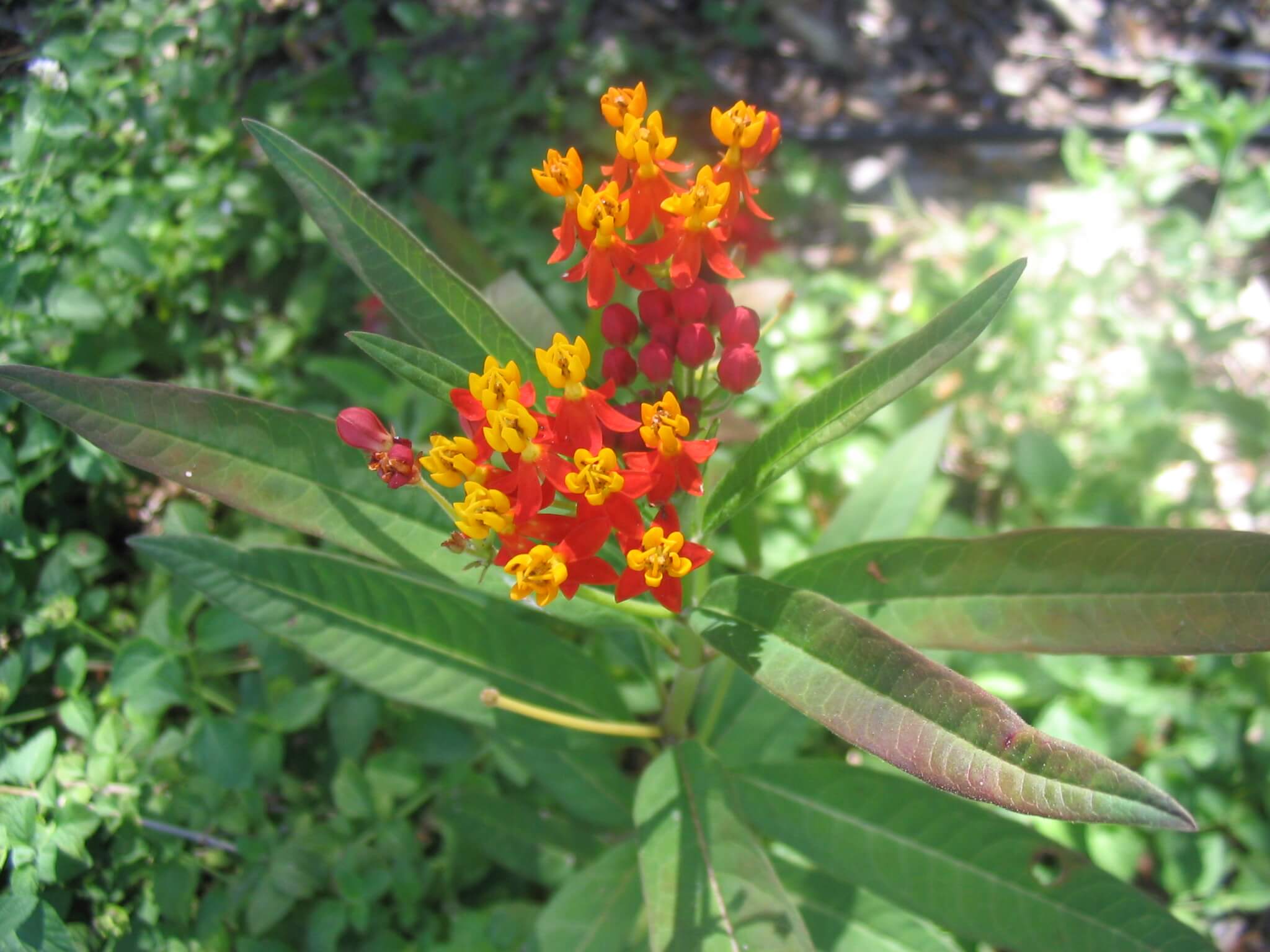 While not native to Arizona, the Tropical Milkweed (Asclepias curassavica) is often grown in the region for its stunning orange and red flowers. However, it’s important to note that this milkweed species may pose a threat to Monarch Butterflies, as it can disrupt their migration patterns. If planting milkweed, it is recommended to choose native Arizona varieties.
While not native to Arizona, the Tropical Milkweed (Asclepias curassavica) is often grown in the region for its stunning orange and red flowers. However, it’s important to note that this milkweed species may pose a threat to Monarch Butterflies, as it can disrupt their migration patterns. If planting milkweed, it is recommended to choose native Arizona varieties.
5. Orange Agoseris
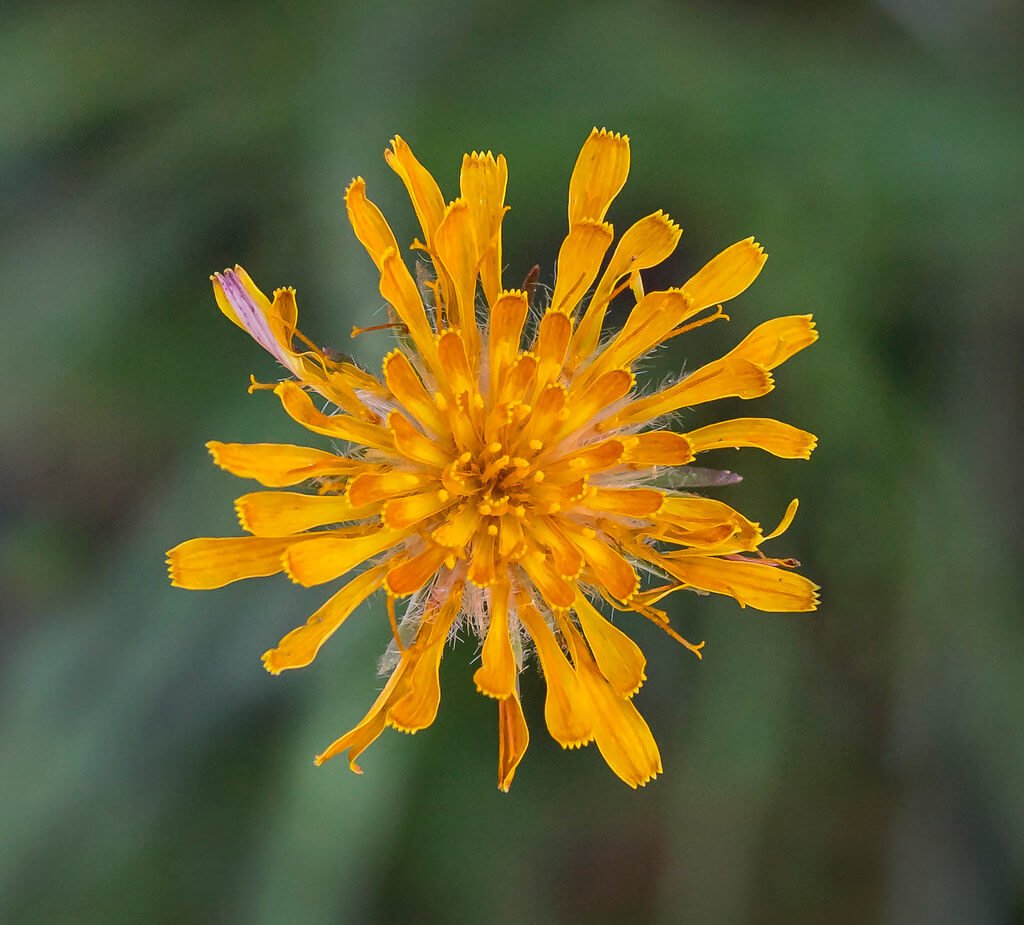 The Orange Agoseris, also known as Agoseris aurantiaca, belongs to the Sunflower family and features beautiful orange flowers. Not only is it visually appealing, but it also has historical uses. The plant’s roots can be used to make Dandelion beer or wine, showcasing its versatility beyond its aesthetic value.
The Orange Agoseris, also known as Agoseris aurantiaca, belongs to the Sunflower family and features beautiful orange flowers. Not only is it visually appealing, but it also has historical uses. The plant’s roots can be used to make Dandelion beer or wine, showcasing its versatility beyond its aesthetic value.
6. Wholeleaf Paintbrush
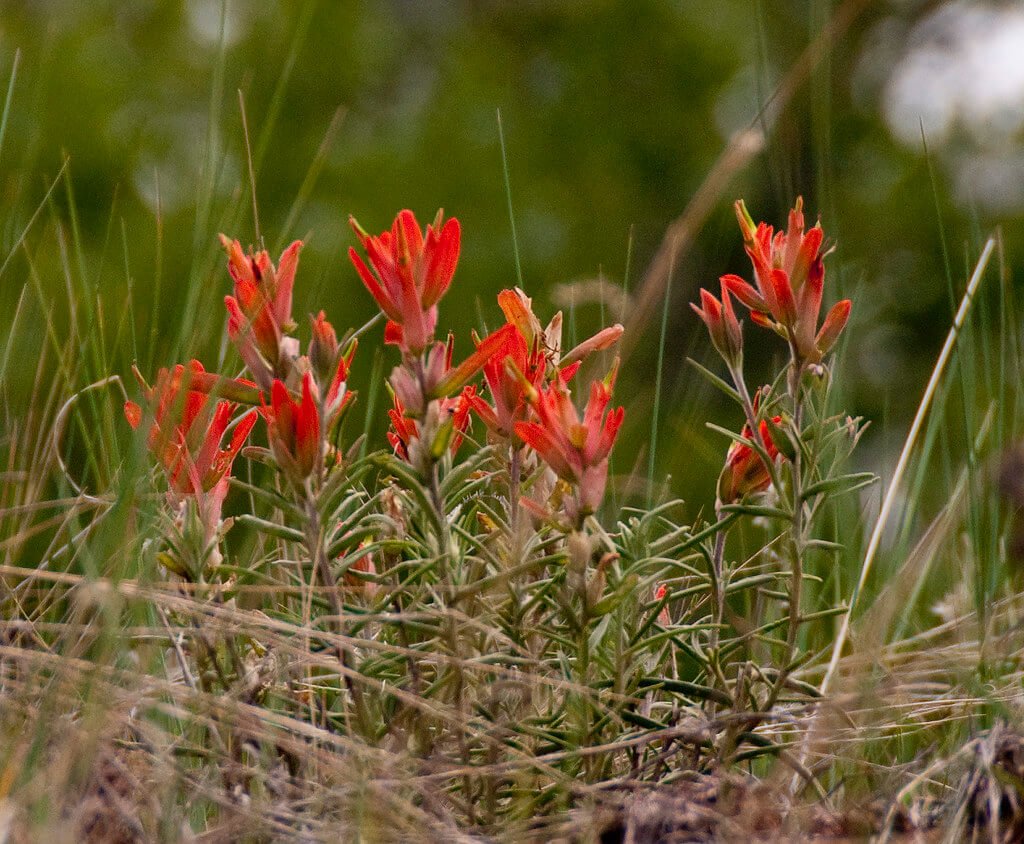 The Wholeleaf Paintbrush, or Castilleja integra, is a showy plant with vivid red-orange bracts. It is characterized by small white hairs on its stems and leaves, adding an interesting texture to its appearance. This perennial wildflower thrives in rocky or sandy soil and can be found in various parts of Arizona.
The Wholeleaf Paintbrush, or Castilleja integra, is a showy plant with vivid red-orange bracts. It is characterized by small white hairs on its stems and leaves, adding an interesting texture to its appearance. This perennial wildflower thrives in rocky or sandy soil and can be found in various parts of Arizona.
By incorporating these common Arizona plants with orange flowers into your garden, you can create a vibrant oasis that not only attracts pollinators but also enhances the natural beauty of the desert landscape.
| Plant | Scientific Name | Main Attractors |
|---|---|---|
| Butterfly Weed | Asclepias tuberosa | Butterflies, Hummingbirds |
| Blanket Flower | Gaillardia aristata | Bees, Birds |
| Texas Lantana | Lantana horrida | Insects, Hummingbirds |
| Tropical Milkweed | Asclepias curassavica | Not native to Arizona |
| Orange Agoseris | Agoseris aurantiaca | Historical uses, visually appealing |
| Wholeleaf Paintbrush | Castilleja integra | Rocky or sandy soil |
Description and Benefits of Orange Arizona Wildflowers
Not only are these orange Arizona wildflowers visually stunning, but they also provide numerous benefits to your garden. Let’s explore the unique characteristics and advantages of each of these vibrant blooms.
1. Butterfly Weed
| Description | Benefits |
|---|---|
| Butterfly Weed, also known as Asclepias tuberosa, is a native perennial that showcases a bright cluster of orange flowers. | As the name suggests, this wildflower attracts butterflies and hummingbirds, making it a delightful addition to any garden. Its nectar-rich flowers also provide a food source for bees and other pollinators. |
2. Blanket Flower
| Description | Benefits |
|---|---|
| The Blanket Flower, or Gaillardia, is a sunflower variety with distinctive red, orange, and yellow petals. | Bees and birds are particularly fond of this vibrant wildflower, making it an excellent choice for pollinator gardens. Its long-lasting blooms also add a burst of color to your landscape. |
3. Texas Lantana
| Description | Benefits |
|---|---|
| The Texas Lantana, or Lantana horrida, is a hardy shrub that produces clusters of orange flowers. | This flower serves as an important food source for insects and hummingbirds. Its aromatic scent adds a pleasant fragrance to your garden while its drought tolerance makes it suitable for arid climates. |
4. Tropical Milkweed
| Description | Benefits |
|---|---|
| Although not native to Arizona, the Tropical Milkweed, or Asclepias curassavica, is a popular orange-flowered plant in the region. | While it attracts insects and hummingbirds, it’s important to note that Tropical Milkweed can have negative effects on Monarch Butterflies. However, if managed properly, it can still be a visually striking addition to your garden. |
5. Orange Agoseris
| Description | Benefits |
|---|---|
| The Orange Agoseris, or Agoseris aurantiaca, is a member of the Sunflower family with stunning orange blooms. | Aside from its aesthetic appeal, this wildflower can be used to create Dandelion beer or wine. It adds a unique touch to culinary and beverage creations while beautifying your outdoor space. |
6. Wholeleaf Paintbrush
| Description | Benefits |
|---|---|
| The Wholeleaf Paintbrush, or Castilleja integra, features vivid red-orange bracts and small white hairs on its stems and leaves. | This eye-catching wildflower serves as a food source for bees and birds, contributing to the overall biodiversity of your garden. Its unique appearance adds a touch of whimsy to any landscape. |
By incorporating these orange Arizona wildflowers into your garden, you not only enhance its beauty but also contribute to the well-being of local wildlife. From attracting pollinators to adding pops of vibrant color, these plants are a perfect choice for creating a blossoming oasis in the heart of the desert.
Considerations for Growing Arizona Plants with Orange Flowers
To ensure the healthy growth of Arizona plants with orange flowers, it’s important to consider a few key factors. From choosing the right location to providing adequate care, these plants require specific conditions to thrive in the desert climate.
Location: When selecting a spot for your orange-flowering plants, make sure they receive plenty of sunlight. Most Arizona perennials with orange flowers, such as the Butterfly Weed and Blanket Flower, prefer full sun exposure. Ensure they have enough space to grow and spread their vibrant blooms.
Soil: Arizona native plants with orange flowers generally prefer well-draining soil. Sandy or loamy soil types are ideal as they allow for proper water drainage, preventing root rot. Add organic matter, such as compost, to improve soil fertility and moisture retention.
Watering: Orange flowering plants for Arizona gardens have different watering needs depending on their specific requirements. While some plants like the Texas Lantana are drought-tolerant, others like the Tropical Milkweed require regular watering. It’s essential to strike a balance and avoid overwatering, which can lead to fungal diseases.
Pest control and maintenance:
Keep an eye out for common pests that can attack your orange-flowering plants, such as aphids, spider mites, and whiteflies. Regularly inspect the foliage and stems for signs of infestation. Employ organic pest control methods or enlist the help of beneficial insects like ladybugs to keep these pests at bay.
Prune your plants regularly to promote healthy growth and remove any dead or diseased parts. This will also help improve air circulation around the plants, reducing the risk of fungal infections.
| Orange Flower | Preferred Growing Conditions |
|---|---|
| Butterfly Weed | Full sun; well-draining soil |
| Blanket Flower | Full sun; well-draining soil |
| Texas Lantana | Full sun to partial shade; well-draining soil |
| Tropical Milkweed | Full sun to partial shade; well-draining soil |
| Orange Agoseris | Full sun to partial shade; various soil types |
| Wholeleaf Paintbrush | Full sun to partial shade; well-draining soil |
By carefully considering these factors and providing the appropriate care, you can enjoy the vibrant beauty of Arizona plants with orange flowers in your garden. Whether you’re cultivating a desert oasis or adding pops of color to your landscape, these stunning blooms will undoubtedly captivate both you and the local wildlife.
Conservation and Preservation of Arizona’s Orange Wildflowers
As we appreciate the beauty of Arizona’s orange wildflowers, it is crucial to understand the significance of conserving and preserving these plants and their natural habitats. These vibrant blooms not only add color to our landscapes but also play a vital role in supporting local ecosystems and wildlife. By taking steps to protect these native plants, we can ensure their survival for future generations to enjoy.
One effective way to conserve Arizona’s orange wildflowers is by preserving their natural habitats. Many of these plants thrive in desert environments and are adapted to the arid conditions of the region. By maintaining the integrity of their native ecosystems, we can provide the necessary resources, such as suitable soil and adequate sunlight, for these plants to thrive.
In addition to preserving habitats, another important aspect of conservation is minimizing the impact of human activities on these plant species. Avoiding activities such as overgrazing, illegal collection, and habitat destruction is essential for the long-term survival of these orange wildflowers. By respecting their natural environment, we can ensure that these plants continue to flourish for years to come.
| Orange Wildflower | Features | Attracts |
|---|---|---|
| Butterfly Weed | Bright orange cluster of flowers | Butterflies and hummingbirds |
| Blanket Flower | Red, orange, and yellow petals | Bees and birds |
| Texas Lantana | Attracts insects and hummingbirds | Insects and hummingbirds |
| Tropical Milkweed | Not native to Arizona, can be harmful to Monarch Butterflies | N/A |
| Orange Agoseris | Belongs to the Sunflower family, used to make Dandelion beer or wine | N/A |
| Wholeleaf Paintbrush | Vivid red-orange bracts, small white hairs on stems and leaves | N/A |
By educating ourselves and others about the importance of these orange wildflowers, we can encourage responsible gardening and conservation practices. This includes choosing native plants for our gardens and landscapes, supporting local nurseries that specialize in native species, and avoiding the use of harmful pesticides and herbicides that can negatively impact these fragile ecosystems.
Ultimately, the conservation and preservation of Arizona’s orange wildflowers are not only vital for the plants themselves, but also for the overall biodiversity and ecological balance of the region. By working together, we can ensure that these beautiful blooms continue to thrive in their natural habitat, adding a touch of vibrant color to Arizona’s landscapes for generations to come.
Conclusion
Arizona’s orange flowering plants offer a unique opportunity to create an eye-catching, desert-inspired garden. With their vibrant colors and distinct characteristics, these plants add a touch of warmth and beauty to any outdoor space.
Throughout this guide, we have explored six common orange wildflowers found in Arizona. The Butterfly Weed, with its bright orange cluster of flowers, attracts butterflies and hummingbirds, bringing your garden to life with fluttering wings. The Blanket Flower, a sunflower variety, showcases a stunning combination of red, orange, and yellow petals, attracting bees and birds with its nectar-rich blooms.
The Texas Lantana, an important flower for wildlife, invites insects and hummingbirds with its vibrant orange clusters. And while the Tropical Milkweed, though not native to Arizona, should be approached with caution due to its potential harm to Monarch Butterflies, its striking orange flowers make it an interesting addition for those seeking tropical flair.
The Orange Agoseris, belonging to the Sunflower family, not only adds a pop of color with its orange blossoms but can also be used to make Dandelion beer or wine, offering a unique culinary opportunity. Lastly, the Wholeleaf Paintbrush, with its vivid red-orange bracts and delicate white hairs, brings a touch of elegance to any garden.
When incorporating these orange Arizona plants into your garden, it is essential to consider their specific growing requirements. Understanding factors such as soil conditions, watering needs, and overall care will ensure healthy and thriving plants. Additionally, it is crucial to support conservation and preservation efforts to protect these valuable and beautiful species.
So, whether you are a seasoned gardener or a gardening enthusiast, Arizona’s orange flowering plants are sure to captivate your senses and bring a slice of the desert’s splendor to your outdoor oasis. Embrace the vibrant colors, unique characteristics, and ecological benefits that these plants offer, and watch your garden blossom with beauty.
FAQ Arizona Plant with Orange Flowers
Q: What are the common orange wildflowers found in Arizona?
A: The common orange wildflowers found in Arizona include Butterfly Weed, Blanket Flower, Texas Lantana, Tropical Milkweed, Orange Agoseris, and Wholeleaf Paintbrush.
Q: What is unique about Butterfly Weed?
A: Butterfly Weed is known for its bright orange cluster of flowers and its ability to attract butterflies and hummingbirds.
Q: What is the Blanket Flower?
A: The Blanket Flower is a sunflower variety with red, orange, and yellow petals that is enjoyed by bees and birds.
Q: What is the importance of Texas Lantana for wildlife?
A: Texas Lantana is an important flower for wildlife as it attracts insects and hummingbirds.
Q: Is Tropical Milkweed native to Arizona?
A: No, Tropical Milkweed is not native to Arizona and can be harmful to Monarch Butterflies.
Q: Can Orange Agoseris be used for brewing?
A: Yes, Orange Agoseris, belonging to the Sunflower family, can be used to make Dandelion beer or wine.
Q: What are the characteristics of Wholeleaf Paintbrush?
A: Wholeleaf Paintbrush has vivid red-orange bracts and small white hairs on its stems and leaves.
